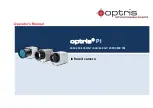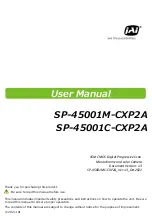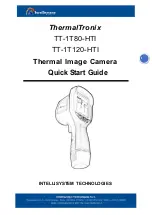
October 30, 1997
7
4
Writing Scripts and Taking Mosaics
Any sequence of qcdcom commands can be entered into a text file (using your favorite editor) and
executed by qcdcom. The command to do this is
source
file, where file is the filename of the
command list. This allows some routine types of observations to be performed automatically, for
example taking a sequence of images in J, H, and K. By entering a sequence of filter move, exposure
time, and go commands into a file, taking a JHK sequence can be done with one
source
command.
Each command is printed along with its file name and line number before it is executed. If some
command in the script fails, execution will stop and the line number where it stopped is printed. A
script may be re-started at a particular line by adding the beginning line as the second argument to
script. Thus “
source jhk3 5
” will begin execution at line 5 of the file jhk3.
Scripts can be most useful for taking mosaics, by using special commands to move the telescope
and communicate with the guider. If you are taking a sequence of unguided exposures, such as for
standard stars, the telescope may be moved directly; the command to do this is
tel aoffset
RA
Dec, where RA and Dec are offsets from the base position (88”) or current telescope position (CFHT,
0.6m). These commands can be interspersed with go commands, filter changes, etc. in a script to
perform whatever pattern you wish.
You can also perform “guided” offsets, either directly (CFHT) or through communication with Atlas
(88”). This is done via the
tel goffset
RA Dec command, which stops the guider, moves the
telescope and guide probe, and turns the guider back on. On the 88" this communicates with Atlas
and MiniOtto over the ethernet to perform the guider movements, and on CFHT commands are sent
over a serial cable to the TCS.
As an example, a potentially useful script is one that takes data for a standard star. This might be a
sequence of exposures in a dithered pattern (using alternating tel aoffset and go commands), followed
by a filter change, followed by another dither pattern, and so forth. Several example scripts may be
found in the home directory of obs/irgroup. Another useful script is one that takes a standard dithered
pattern of a field (e.g. a 13-point diamond). This can be simply a sequence of alternating tel goffset
and go commands, or a multiple-filter sequence.
If you prefer, it is also possible on the 88" to run mosaics from Atlas. To do this, turn pause and
CCD modes off and QUIRC mode on on Atlas. After initiating the mosaic program on Atlas, the
qcdcom
tel gnext
command tells Atlas to move to the first mosaic pattern position and waits for
it to finish moving. The
go
command can then be issued, then another
tel gnext
causes Atlas to
move to the next mosaic position. This can be repeated until the mosaic is complete, and any other
qcdcom commands (except telescope motion, do not use
aoffset
!) can be interspersed. Note that
if Atlas encounters an error, an alert box will pop up and Atlas will cease talking to qcdcom until the
alert is cleared. This will most likely cause the script to fail, and the mosaic will need to be re-started
from the middle.
5
Filters and Focusing
There are now two filter wheels in QUIRC with eight positions each. Because two OPEN positions
(position 5 on both wheels) are required and one position (wheel 2 slot 8) holds a polarizer, thirteen
Summary of Contents for QUick Infrared Camera
Page 2: ......


























